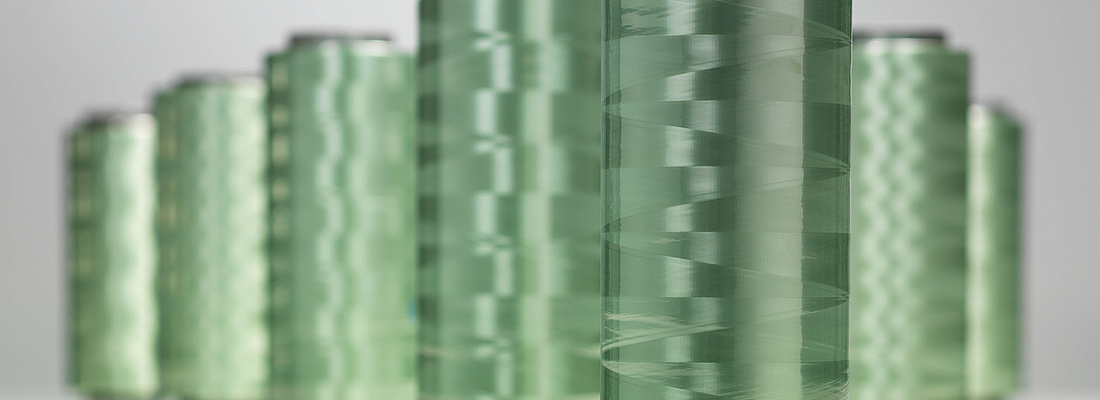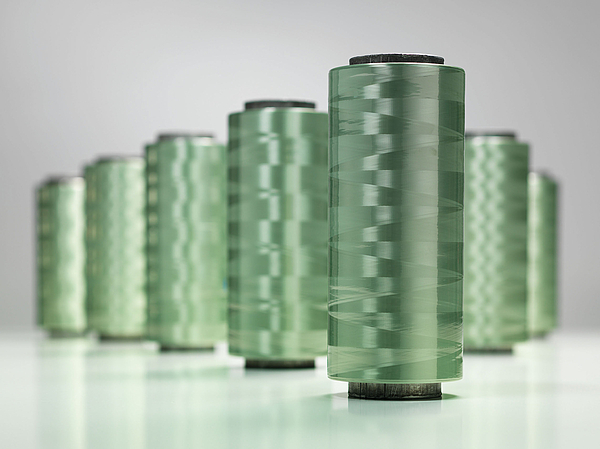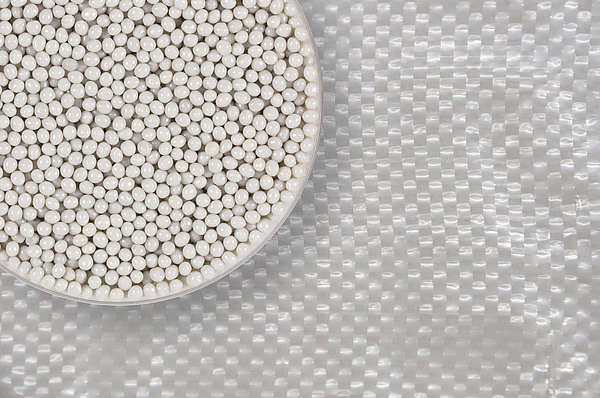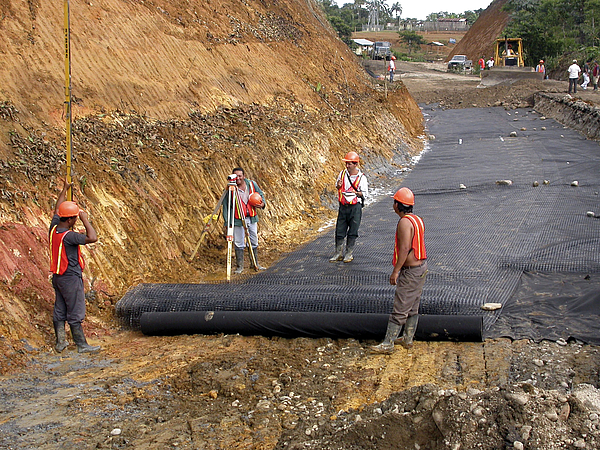

Polyester is a widespread polymer: PES fibers have been used for decades in textile production, PET for bottles and film in the packaging industry, and various specialty polyesters for engineering plastics. The outstanding mechanical and chemical properties of PET make it the material of choice for a wide variety of intermediate and final products. Recyclability and the possibility to produce PET in a closed loop to reduce emissions to the environment are other factors that helped PET to gain importance in the past years.
Developments in technology allow the use of PET in new fields where it brings important advantages due to its material characteristics. One such field is heavy-duty fabric for applications such as big bags, geotextiles, carpet backing and tarpaulins. Austrian machinery producer Starlinger & Co. Ges.m.b.H. has developed the process technology for the production of tape fabric made of virgin and recycled PET. The engineering company has already invented a number of packaging solutions made of woven polypropylene tape fabric for dry bulk products. Regarding PET processing, Starlinger relies on more than 10 years of solid experience: The company divisions Starlinger recycling technology and Starlinger viscotec specialise in PET recycling and refinement and have gathered ample expert know-how in this field. With the PET tape technology Starlinger is now stepping into the territory of speciality fabrics for heavy duty applications. The exceptionally high strength and long-lasting form stability of PET tape fabric make it the perfect material for heavy-duty fabrics used e.g. for FIBCs (Flexible Intermediate Bulk Containers), geotextiles, carpet backing, or tarpaulins.
PET tape fabric – excellent performance, look, recyclability
The combination of high strength and a high melting point are the two main reasons why PET achieves a better performance and withstands higher working temperatures than other polymers used for fabric production: PET maintains its modulus and strength at temperatures up to 80 °C and has excellent creep resistance. Creep is time-dependent strain or deformation due to stress; it occurs as a result of long term exposure to high levels of stress that are below the yield strength of the material. A very visible feature of PET tape fabric is its high gloss that provides it with outstanding visual appeal. PET tape fabric can be produced transparent and in a wide variety of colours offering new possibilities for package style and design. Another important characteristic in favour of PET as a packaging material is its excellent recyclability. As polycondensation is a reversible reaction, the molecular weight of PET can be rebuilt, allowing converters to use recycled material to replace virgin resin. The possibility to recycle PET tape fabric a 100% and reuse it is an essential aspect for a sustainable future.

Fig. 1: PET tapes on bobbins
Special material properties of PET:
• Increased stiffness due to higher tensile modulus combined with high surface resistivity
• Higher creep modulus and thus higher creep resistance
• Very good abrasion resistance
• The material of choice for hot fill applications
• Does not become brittle at temperatures below 0°C
• Lower residual shrinkage at high temperatures
Lean production process
The production of PET tape fabric is less complex and thus less cost-intensive compared to multi- and monofilament fabric, while similar properties are achieved. Extruded PET film is slit into narrow tapes, then stretched and wound up on bobbins. The bobbins can be used directly as warp and weft bobbins on circular looms for weaving the fabric. The great advantages of this method: It requires fewer production steps (twisting of filaments for yarn production and winding the yarn onto warp beams for weaving is not necessary), and it is easy to set and achieve different tape properties such as tape width, yarn count, elongation, tenacity or shrinkage. Moreover, no spinning and weaving lubricants are needed, which further brings down raw material costs, ensures better coating/laminating adhesion and generally makes conversion and recycling easier.

Fig. 2: FIBC (Flexible Intermediate Bulk Container made from recycled PET
Starlinger comPETence Center
Starlinger has started developing production technology for PET tape fabric in 2010. Since then, ample process know-how has been gathered in PET tape extrusion and the subsequent weaving process of PET tape fabric. In the Starlinger comPETence Center, a special facility dedicated exclusively to the development of PET tape fabric for heavy-duty packaging applications, the correct equipment setup, the optimum parameter settings for extrusion and weaving have been tried and tested to achieve the desired results. Continuous laboratory analysis of the tape and fabric samples produced on the installed equipment ensures that all relevant criteria are met.
The Starlinger comPETence Center is also available for customer trials on the installed PET tape extrusion line and the circular looms, as well as for testing of customer materials.

Fig. 3: FPET pellets and PET tape fabric
From bottle to bag – rPET
With Starlinger also producing technology for PET bottle-to-bottle recycling, the next logical step was to use rPET in the fabric production process. As stated before, PET is fully recyclable; quality losses such as IV decrease can be reversed by solid-state polycondensation, so that rPET achieves the same properties as virgin PET. In addition, customized UV protection can be added (for outdoor applications). Starlinger has successfully tested rPET in the tape and fabric production process and produced FIBCs from this material which show the same performance as FIBCs made from virgin PET. The used rPET tape fabric can be recycled again and reused in the same or different applications, which considerably reduces the carbon footprint.

Fig. 4: PET tape fabric is perfect for geotextiles
A wide field of applications
Be it attractive packaging for consumer goods such as sugar, cereals or pet food, or geotextiles used for soil reinforcement and erosion control – PET tape fabric meets the requirements for various applications. The high working temperature, an eye-catching appearance, low weight and shrinkage combined with high tenacity and creep resistance are qualities that surpass those of other types of plastic fabric currently used for such applications and speak in favour of PET. But not only PET tape fabric offers many advantages; also the plain PET tapes can be employed for a variety of uses: tear tapes, filling yarn, concrete fibre, ropes, belts, to name a few.
The comPETence center provides your organisation with a dynamic, cost effective way to promote your products and services.

magazine
Find our premium articles, interviews, reports and more
in 3 issues in 2026.

